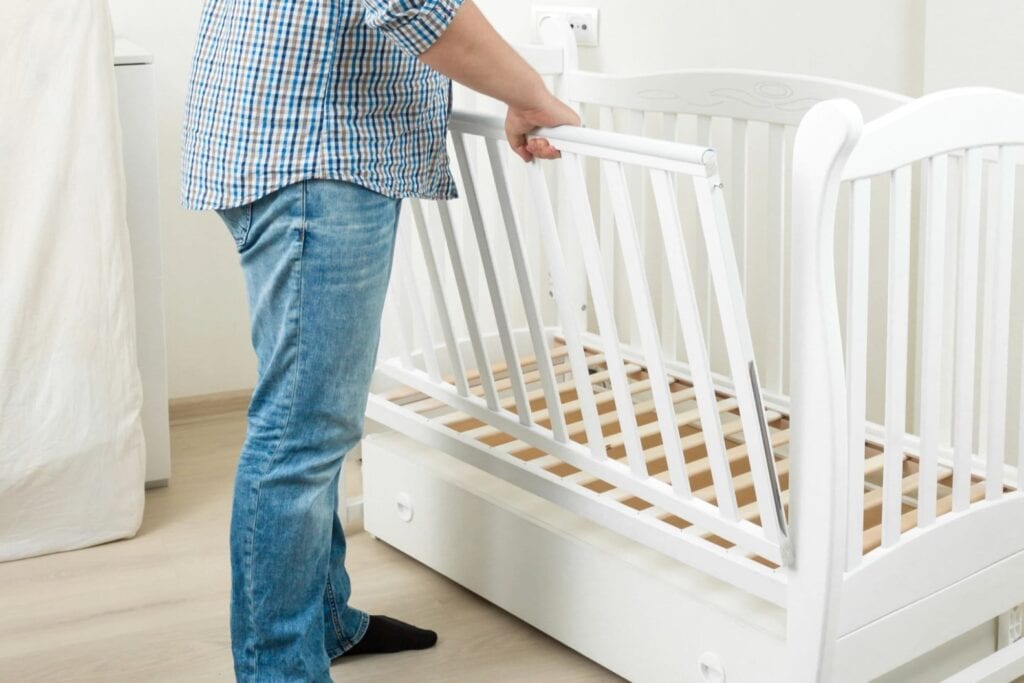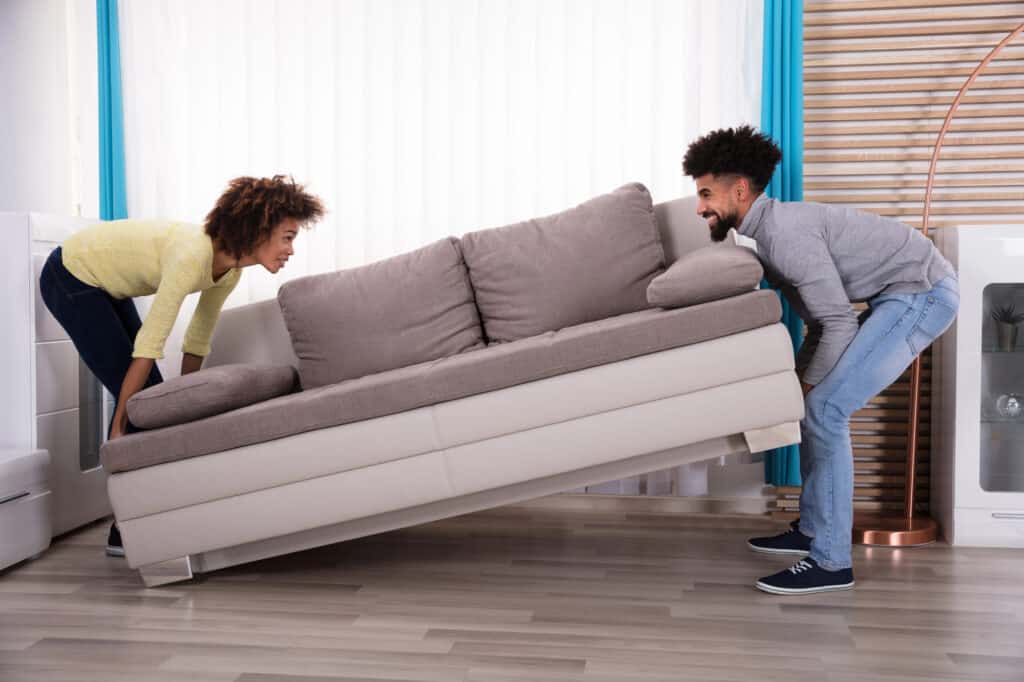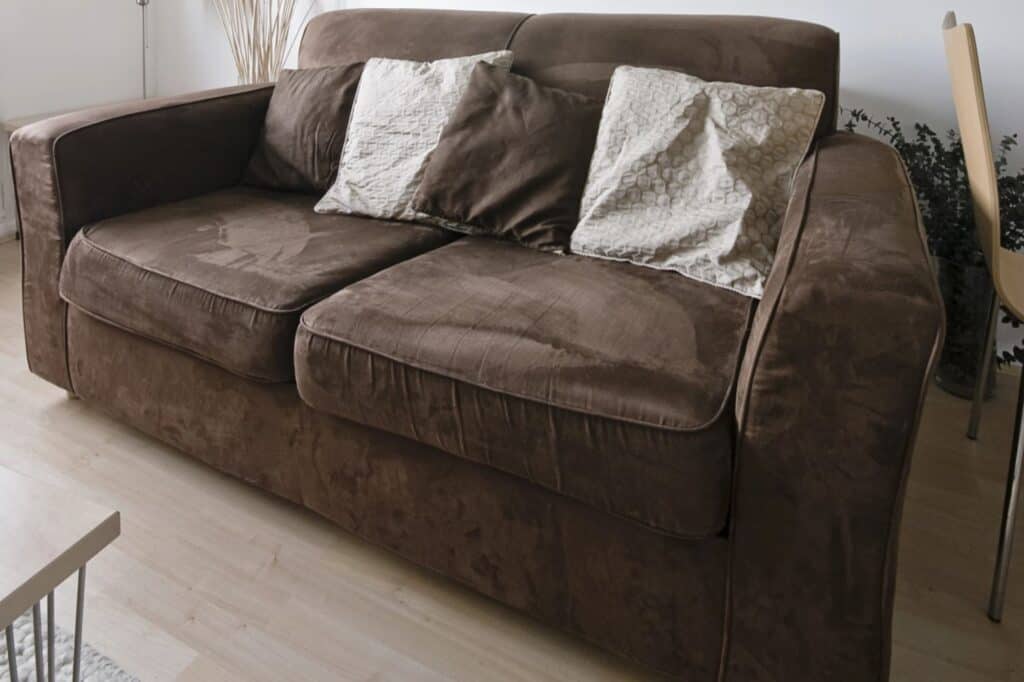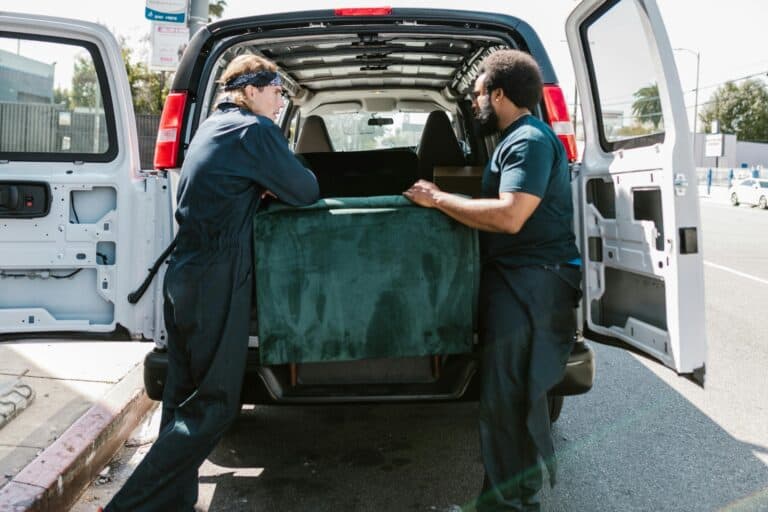Moving large furniture during a house move can seem impossible. But with the right approach, it’s manageable. This article will give you practical steps on how to move large furniture when moving house. From planning and clearing pathways to using proper equipment, we’ll cover all the essentials for a smooth transition.
Key Takeaways
- Plan ahead: Organising early can help reduce stress, save money, and ensure a smooth moving day.
- Disassemble and label: Taking apart large furniture and labelling each piece can make the move easier and protect your items.
- Use the right tools: Proper equipment like dollies, sliders, and lifting straps can help prevent injury and make moving heavy items more manageable.
Plan Your Move in Advance
A successful house move hinges on early organisation. Minimise stress, save money and guarantee a smooth transition by planning your move well in advance. Early planning helps you avoid last-minute decisions that can lead to increased expenses and potential delays. Additionally, starting early allows you to select optimal moving dates, avoiding busy periods when professional movers might be fully booked.
Pondering the logistics of your move is also indispensable. Plan the route through your home carefully, ensuring that you have a clear path for moving heavy furniture. If you need help with lifting, make arrangements in advance to ensure safety and efficiency. By taking these steps, you’ll be well on your way to a stress-free moving day.
Measure Doorways and Furniture
Before setting your furniture in motion, make sure you have measured both your doorways and your furniture. This ensures that each piece of furniture can fit through doorways and into your new designated spaces without any issues.
Here’s what you need to do:
- Measure the width, height, and depth of each piece of furniture.
- Measure the width and height of your doorways and hallways.
- Compare the dimensions of your furniture to the dimensions of your doorways and hallways to avoid any surprises on moving days.
For example, before moving a sofa, measure its dimensions and the width of your doorways and access points. This simple step can prevent potential damage to your furniture or walls and save you a lot of hassle. Keep these measurements handy throughout the moving process to ensure a smooth transition.
Clear Pathways
Prior to moving day, it is vital to rid all pathways of obstacles. This ensures a safe and smooth moving process when moving house, preventing any accidents or damage to your furniture.
Make sure to clear exit pathways and any clutter, creating a direct path from your house to the moving truck. This simple step can make a big difference in how efficiently you can move heavy furniture.
Disassemble Large Furniture
Breaking down large furniture pieces simplifies and safeguards the moving process. By taking apart bulky furniture, you can:
- Reduce the risk of damage
- Make it easier to fit through doorways and hallways
- Save space in the moving truck, potentially reducing the total cost of your move.
To disassemble furniture, follow these steps:
- Identify which pieces of furniture need to be disassembled, such as bed frames, tables, and modular sofas.
- This task may require tools such as an Allen key, a screwdriver, and a hammer. Having these tools on hand will be helpful in completing the task efficiently.
- Take pictures during the disassembly process to help you reassemble the furniture correctly in your new home.
Label Parts
For effortless reassembly at your new home, ensure all parts are labelled when disassembling furniture. Use labelled plastic bags for screws, bolts, and other small parts, and attach labels to larger pieces. This will save you time and frustration when putting everything back together.

Keep Hardware Safe
For furniture protection and smooth reassembly, maintain an organized and safe collection of all hardware in labelled bags. This includes:
- nuts
- bolts
- screws
- wooden dowels
Place these items in labelled plastic baggies to avoid losing them during the move.
This simple step will make the reassembly process much more manageable.
Protect Your Furniture
Shielding your furniture during the move is fundamental to evade damage and ensure everything arrives intact. Using moving blankets, bubble wrap, and other protective materials can safeguard your belongings. Wrap large items such as sofas, tables, and chairs in moving blankets to protect them from scratches and dents during transit.
Additionally, securing loose items inside furniture can prevent damage and make the pieces easier to move. For example, remove drawers from desks and tie up power leads and cables with cable ties or packing tape. These steps will help keep your furniture and other belongings safe throughout the moving process.
Use Moving Blankets and Bubble Wrap
To safeguard your furniture during transit, employ moving blankets and bubble wrap. Wrap furniture in these materials to prevent damage and protect your home from scratches. Furniture pads are ideal for wooden furniture, while bubble wrap works well for upholstered items. Moving blankets can also protect walls from being damaged by furniture during the move.
RECOMMENDATION
Use a variety of protective materials, including heavy-duty materials, bubble wrap, and moving blankets, to guard against damage during transit. Secure the protective coverings with packing tape to ensure they stay in place throughout the move.
Secure Loose Items
Fastening loose items within furniture wards off damage and facilitates moving. Remove drawers from desks and other furniture to lighten the load and prevent potential damage during transit. Tie up power leads and cables with cable ties or packing tape to keep them organized and prevent tripping hazards. This will help ensure a stress-free moving experience.
Utilise Proper Equipment
Employing appropriate equipment simplifies and secures the process of moving large furniture. Some essential tools for safely moving heavy items include:
- Carrying aids
- Sliders
- Ramps
- Dollies
Furniture dollies, also known as furniture skates or piano trolleys, enable controlled and safe movement of heavy items. They help maintain stability and make the job easier for everyone.
Furniture sliders, which are small pieces of plastic or rubber, can be placed under furniture legs to reduce friction and allow for effortless sliding. Lifting straps bear most of the weight when two people carry large objects, offering more support and leaving hands free to manoeuvre items. These tools can significantly reduce the risk of injury and make the moving process more efficient.
Furniture Dollies
Furniture dollies, including the versatile furniture dolly, are invaluable for moving heavy furniture. These low, flat platforms with wheels can withstand heavy loads and facilitate easy movement. Use furniture dollies to move large items like sofas, beds, and heavy tables with ease. They help protect both your furniture and your back.
Furniture Sliders
Furniture sliders allow for effortless sliding of heavy furniture without damaging floors. Here are some options for furniture sliders:
- Hard sliders: particularly effective on carpeted surfaces
- Soft sliders: work best on hard surface floors like wood, vinyl, or tile
- Homemade sliders: you can make them using items like rugs, towels, or plastic container lids.
Lifting Straps
Lifting straps provide support and reduce the risk of injury when moving heavy furniture. These specialised straps, also known as shoulder dollies, help distribute weight more evenly and minimise the risk of back injuries.
Use lifting straps to move large items with ease and safety.
Safe Lifting Techniques

Understanding the correct method to lift and carry heavy items is paramount to prevent serious injuries. Here are some tips to keep in mind:
- Adopt a stable position with your feet apart and one leg in front of the other to enhance stability.
- Avoid twisting your back or leaning sideways while lifting; instead, move your feet to turn.
- Keep the load close to your waist.
- Maintain a tight core for better control and reduced strain.
Bend at the knees and lift with a straight back, using your leg muscles to absorb impact when moving furniture downstairs. For long lifts, consider resting the load midway on a table or bench to change grip and reduce strain. These safe lifting techniques can help prevent injuries and make the moving process more manageable.
Lift with Your Legs
Lift with your legs, not your back, to avoid strain and injury. Slightly bend your back, hips, and knees at the start of the lift, and do not flex your back any further while lifting. Use your leg muscles to absorb impact when moving furniture downstairs, bending your knees to act as shock absorbers.
Team Lifting
Team lifting ensures safety and efficiency when moving heavy furniture. Attempting to move large furniture by yourself can lead to significant risks, including injury and property damage. Ask a friend or hire professional movers to help with moving heavy and large furniture to ensure safety and avoid injuries.
Navigating Stairs and Tight Spaces
Navigating stairs and tight spaces with large furniture can pose a challenge. Careful planning and specific techniques are required to avoid damage to the furniture and the property, as well as to prevent injury. Consider using a stair dolly, which has rotating wheels or tracks, for easier navigation of stairs. The ‘walk backwards’ technique can be used for large items, where you stand facing the stairs and move backwards while supporting the furniture. This method provides more control and reduces the risk of injury.
Effective communication between the people carrying the furniture is crucial to ensure smooth navigation up the stairs. If the furniture is too large or heavy to move downstairs, consider disassembling it. These techniques can help you safely move furniture through tight spaces and avoid damage.
High-to-Low Technique
The high-to-low technique involves carrying tall items with one person carrying either end of the item. The furniture should be tipped at an angle so that one end is lower than the other. When moving furniture up or down stairs, the person lower on the staircase should carry the heavy item from its bottom surface, while the person higher on the stairs should carry it from its top surface.
When moving furniture up or down stairs, the person lower on the staircase should carry the heavy item from its bottom surface …
Use extreme caution and walk very slowly to maintain control.
Pivoting Around Corners
Pivoting furniture around tight corners can minimise damage and make manoeuvring easier. Tilt and rotate furniture as needed to pivot around tight corners, keeping the width to a minimum. Use the ‘hook’ technique to continuously turn the furniture as it moves through the door frame.
In extreme cases, consider removing a door frame or window to get the items out of the property.
Loading and Unloading the Truck
Efficient loading and unloading of the moving truck is a necessity for a seamless moving process. Always load the largest and heaviest items first to ensure an even weight distribution in the truck. This helps maintain balance and stability during transit. Use a ramp to make loading heavy items into the truck easier and safer.
When unloading, carefully remove large furniture items from the truck last. Secure heavy items against the truck walls with straps or ropes to prevent shifting during transit. These steps will help ensure your furniture arrives at your new home in good condition.
Load Heavy Items First
Load heavy objects first to ensure even weight distribution in the truck. This makes driving the truck easier and safer.
Consider the weight distribution when loading heavy items to maintain balance and stability.
Secure Furniture with Straps
Securing furniture with straps is essential to prevent shifting during transit. Attach straps to anchor points within the truck to keep furniture stable and prevent damage.
This is particularly important to protect furniture, especially large and awkwardly sized furniture items, which can easily move around and cause damage if not properly secured.
Consider Professional Movers
Although self-moving can be cost-effective, it frequently involves considerable physical strain and potential hazards. Hiring furniture movers can make the entire moving process smoother and stress-free. They provide transport for large furniture, eliminating the need for multiple trips with smaller vehicles. Professional movers also offer expertise, ensuring that your items are packed and handled properly, which minimises the risk of damage.
In addition, hiring a moving company often includes insurance coverage and protecting your belongings in case of accidents or damage during transit. This can save you time and money by reducing the need for replacements. If none of your friends are willing to help with the move, professional movers are a wise investment.
Benefits of Hiring Professionals
Engaging professional movers provides numerous advantages, such as skilled handling, time efficiency, and insurance coverage for your belongings. Their experience with packing and handling delicate or large items reduces the risk of damage during transport.
Using professional movers in Battersea can relieve stress by handling the logistics and physical labour of the move, allowing you to focus on settling into your new home.
Choosing the Right Removal Company
Selecting a suitable removal company in Battersea is key to a triumphant move. Start by getting quotes from multiple providers to find the best service and price. Look for removal companies that offer insurance coverage to protect your items during the move.
Additionally, check reviews and testimonials from previous customers to ensure the company has a good reputation. This diligence will help you find a reliable removals company for your move.
Summary
Moving a house can be daunting, especially with large furniture, but careful planning and the right techniques make it manageable. Start by planning ahead, measuring doorways and furniture, and clearing pathways. Disassemble large items, label parts, and keep hardware safe for easy reassembly. Protect furniture with moving blankets and bubble wrap, and secure loose items. Use proper equipment like dollies, sliders, and lifting straps, and practise safe lifting techniques such as lifting with your legs and team lifting. Navigate stairs and tight spaces with care, load heavy items first, and secure furniture with straps. Consider hiring professional movers for a stress-free experience, especially for valuable or antique items. By following these tips, you can ensure a smooth and successful move.
Frequently Asked Questions
Why is it important to plan my move in advance?
Because planning in advance helps minimise stress, avoid increased expenses, and ensure a smooth moving process. It’s important to give yourself plenty of time to organise and prepare for the move.
How do I protect my furniture during the move?
Protect your furniture by using moving blankets, bubble wrap, and other protective materials. Also, secure loose items inside furniture to prevent damage. Good luck with your move!
What equipment should I use to move heavy furniture?
You should use furniture dollies, sliders, and lifting straps to move heavy furniture, as they can make the process easier and safer.
How can I safely lift heavy items?
Make sure to use safe lifting techniques, like lifting with your legs and not twisting your back, to avoid injury. You can also consider team lifting to distribute the weight.
Should I hire professional movers?
Yes, you should consider hiring professional movers because they offer expertise, efficiency, and insurance coverage for your belongings, making the moving process less stressful.







